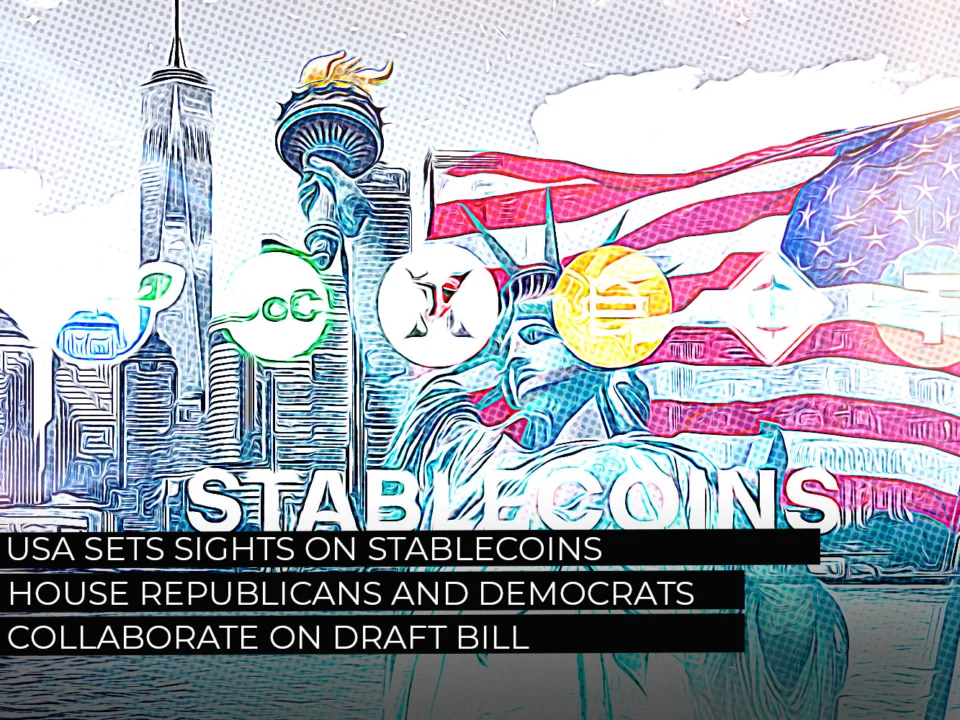In an unprecedented move, House Republicans and Democrats are joining forces to regulate stablecoins, marking a significant step towards structured oversight of the cryptocurrency market. The bipartisan draft bill aims to introduce key provisions designed to ensure the stability and security of these digital assets. As lawmakers collaborate, both the financial industry and cryptocurrency enthusiasts are keenly observing the potential impacts on market dynamics and investor confidence. By addressing the regulatory gap, the draft bill signifies a new chapter in the evolving landscape of stablecoins and their role in the global economy.
Bipartisan Efforts to Regulate Stablecoins

In a significant move, both House Republicans and Democrats have come together to draft a bill focused on regulating stablecoins. This bipartisan collaboration highlights the growing importance of stablecoins in the financial landscape and the need for clear regulatory guidelines.
Key Points of the Collaboration:
- Unified Approach: Traditionally opposing parties are now working towards a common goal—ensuring the stability and security of stablecoins.
- Establishment of Standards: The draft bill aims to create industry standards for issuers, aiming to mitigate risks associated with these digital assets.
- Consumer Protection: Lawmakers emphasized the importance of protecting consumers from fraud and volatility, fostering greater trust in stablecoins.
- Market Integrity: By regulating stablecoins, the bill seeks to maintain the integrity of the broader cryptocurrency market.
Collaboration Benefits:
- Enhanced Confidence: A bipartisan effort will likely bolster public and investor confidence in stablecoins.
- Clear Framework: The bill will provide a clear regulatory framework, benefiting both issuers and users.
- Innovation Encouragement: Balanced regulations can encourage innovation while ensuring safety and compliance.
In summary, the bipartisan effort to regulate stablecoins signifies a critical step towards a more secure and stable cryptocurrency market.
Key Provisions of the Draft Bill
The draft bill on stablecoins represents a balanced attempt from both House Republicans and Democrats to establish clear and comprehensive regulations. Key provisions in the bill include:
Regulatory Framework: Defining the roles of different regulatory bodies such as the Securities and Exchange Commission (SEC) and the Commodity Futures Trading Commission (CFTC) in overseeing stablecoins.
Reserve Requirements: Mandating issuers of stablecoins to maintain sufficient reserves in highly liquid assets to ensure stability and investor confidence.
Transparency Standards: Requiring stablecoin issuers to provide regular disclosures about their reserve holdings, the backing of stablecoins, and audit reports.
Consumer Protection: Implementing measures to protect consumers, including disclosures about the risks associated with stablecoin transactions and mechanisms for dispute resolution.
Licensing Requirements: Establishing a clear licensing process for companies that issue stablecoins, ensuring only financially stable and compliant entities can operate.
| Provision | Details |
|---|---|
| Regulatory Framework | Roles of SEC and CFTC |
| Reserve Requirements | Sufficient reserves in liquid assets |
| Transparency Standards | Regular disclosures and audit reports |
| Consumer Protection | Risk disclosures and dispute resolution mechanisms |
| Licensing Requirements | Clear licensing process for issuers |
These provisions aim to not only provide stability to the stablecoins market but also foster innovation by creating a transparent and trusted environment.
Potential Impact on the Cryptocurrency Market
The draft bill’s potential impact on the cryptocurrency market could be significant. If passed, the legislation would introduce a more predictable and stable environment for stablecoins. Here are a few ways it might influence the market:
- Increased Trust: Clear regulations can increase trust among investors and users, making stablecoins a more attractive option.
- Market Growth: With a secure framework, more financial institutions might adopt stablecoins as part of their offerings.
- Innovation Boost: Well-defined rules can foster innovation by providing clear guidelines for new projects.
| **Potential Benefits | Possible Challenges** |
|---|---|
| Enhanced security and stability | Regulatory compliance costs |
| Broader institutional adoption | Slow adaptation for existing projects |
| Boost in user confidence | Legal ambiguities during the initial phase |
Overall, the draft bill aims to create a balanced approach. It seeks to mitigate risks while promoting the benefits that stablecoins can bring to the broader financial ecosystem.
Frequently Asked Questions
1. What is the purpose of the draft bill on stablecoins?
The draft bill aimed at stablecoins seeks to establish regulatory clarity and a framework for the issuance and operation of stablecoins within the USA. By providing clear guidelines, the bill aims to enhance financial stability, protect consumers, and ensure that the benefits of stablecoin technology are accessible while mitigating potential risks.
2. Who is involved in the drafting of this stablecoin bill?
The drafting of the stablecoin bill is a collaborative effort between House Republicans and Democrats. This bipartisan cooperation underscores the importance of establishing a cohesive regulatory approach to managing digital currencies like stablecoins, ensuring that all perspectives are considered to create balanced and effective legislation.
3. What are stablecoins, and why are they significant?
Stablecoins are a type of cryptocurrency designed to minimize price volatility by pegging their value to a stable asset, such as the US dollar, other fiat currencies, or commodities like gold. They are significant because they combine the benefits of digital currency (such as fast transactions and low fees) with the stability of traditional currencies, making them attractive for various financial applications, including remittances and decentralized finance (DeFi).
4. How might this bill impact the future of the cryptocurrency market in the USA?
If passed, this draft bill could have substantial implications for the cryptocurrency market in the USA. By providing regulatory certainty, it could encourage more mainstream adoption of stablecoins and bolster innovation within the crypto space. Additionally, clear regulations could attract more institutional investors and help integrate stablecoins into the broader financial system, potentially leading to more robust growth and stability in the cryptocurrency market.







